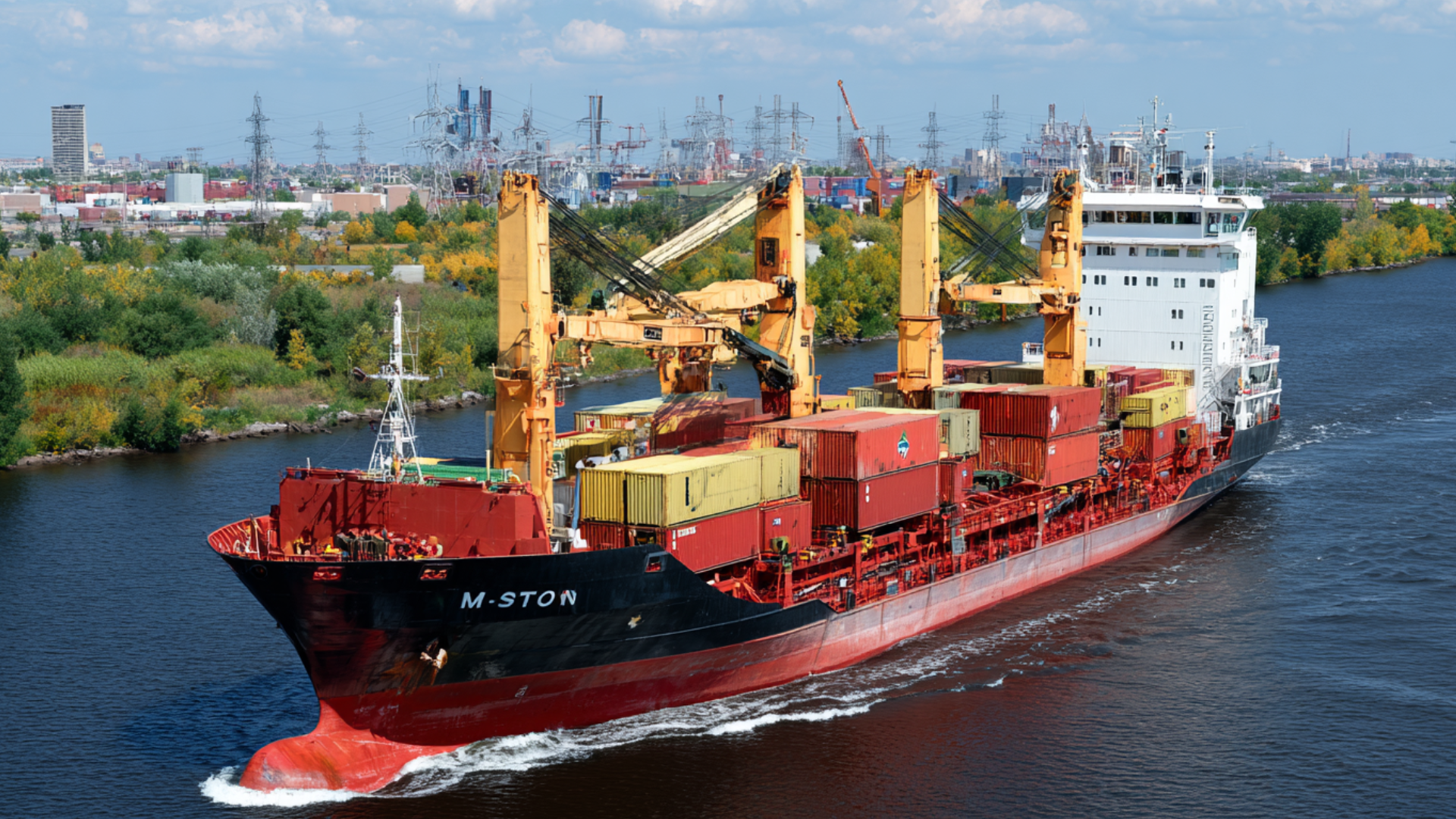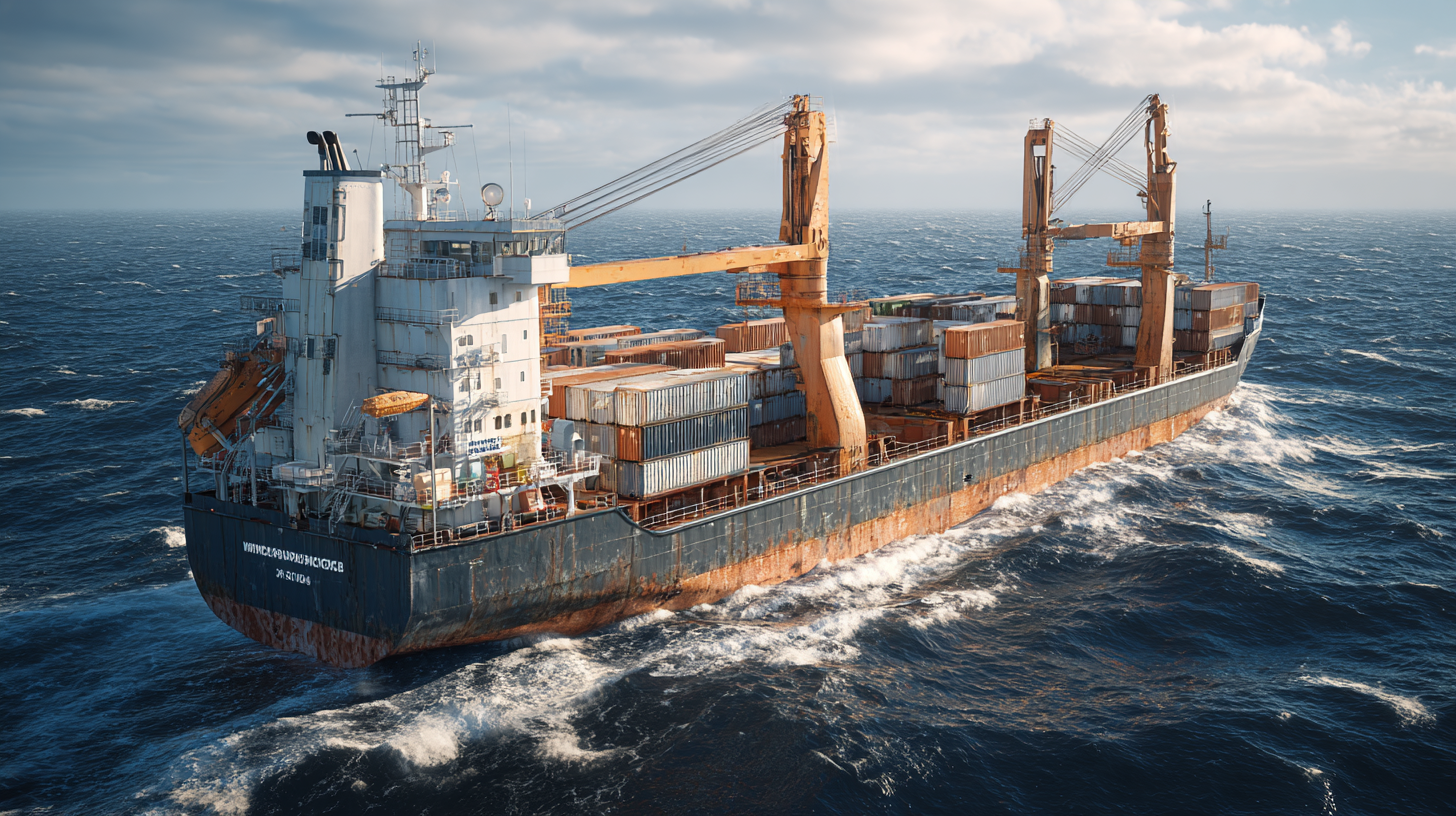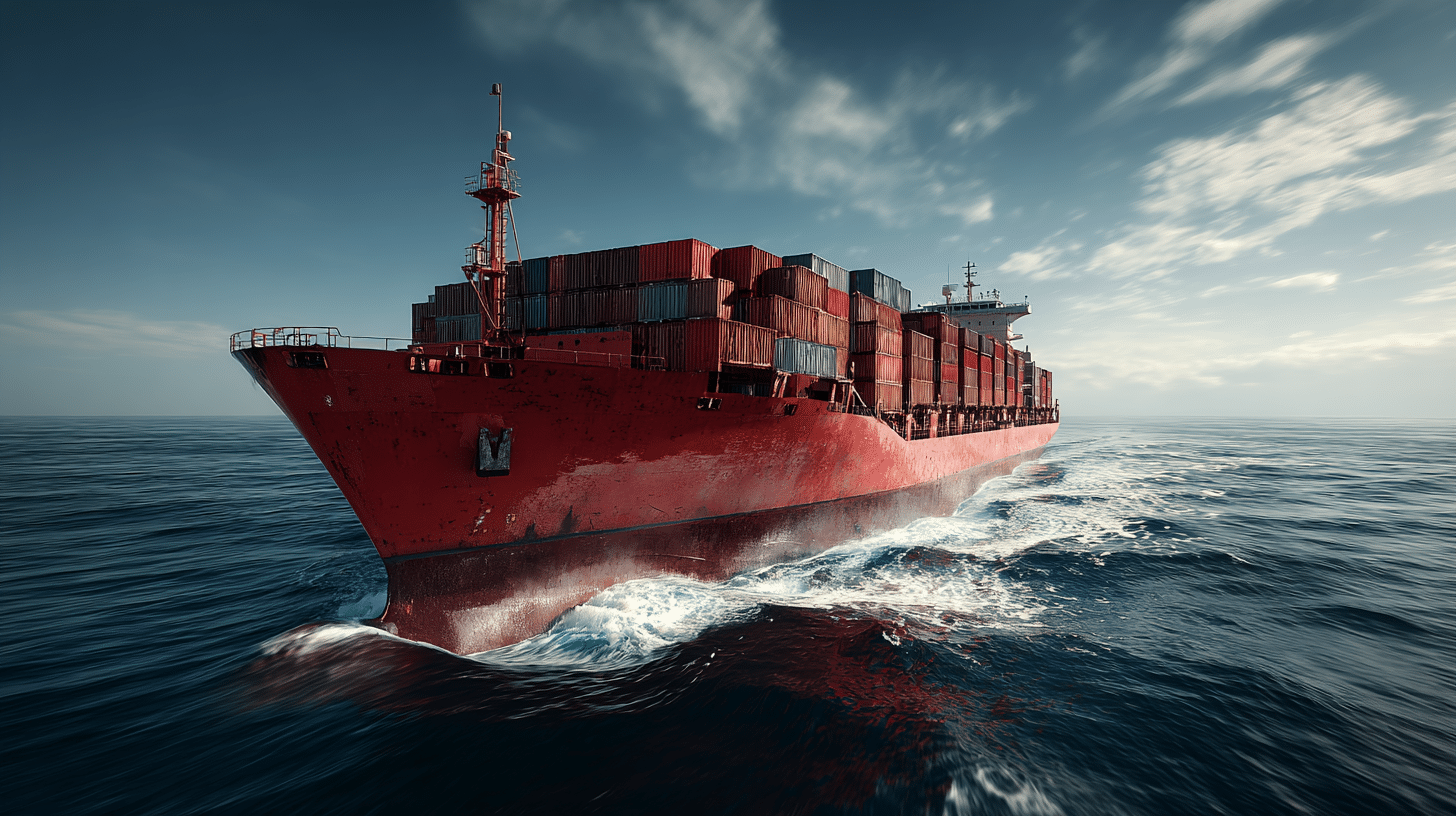Cargo ships play one of the most important roles in global trade, carrying nearly 90% of the world’s goods across oceans. Instead of racing from port to port, these massive vessels focus on steady and reliable travel.
Their speed shapes more than just delivery times; it also affects the price of everyday products and the level of pollution released into the air.
I find it interesting that modern ships adjust their pace for various reasons, such as saving fuel, meeting shipping schedules, or navigating rough seas.
In this blog, I’ll go over how ship speed works, why it matters, and what it means for trade, costs, and the planet.
Average Cargo Ship Speeds

Most cargo ships travel at speeds between 12 and 25 knots.
A knot is a unit used at sea to measure speed. One knot equals about 1.15 miles per hour (mph) or 1.85 kilometers per hour (km/h). That means when a ship is sailing at 20 knots, it’s moving about 23 mph or 37 km/h.
Ships may seem slow compared to cars or planes, but they carry massive amounts of goods across oceans. Going a little slower helps save fuel and keeps shipping costs lower.
This balance between speed and fuel consumption is one of the most crucial aspects of modern sea travel.
Knots Conversion Table
| Speed (knots) | Miles per hour (mph) | Kilometers per hour (km/h) |
|---|---|---|
| 10 knots | 11.5 mph | 18.5 km/h |
| 15 knots | 17 mph | 28 km/h |
| 20 knots | 23 mph | 37 km/h |
| 25 knots | 29 mph | 46 km/h |
Cargo Ship Speeds by Type
Different cargo ships travel at different speeds depending on what they carry and how they are built. Here are the main types of ships.
1. Container Ships (16–25 knots)
Container ships carry stacked containers filled with items such as electronics, clothing, and furniture. They are built with strong engines so they can move faster than most other cargo vessels.
Their usual speed is 16 to 25 knots, about 18–29 miles per hour. This speed helps deliver goods on time for global trade.
2. Bulk Carriers (12–15 knots)
Bulk carriers are built to haul raw materials like coal, iron ore, grains, and cement. These ships are enormous and often sail with millions of tons of heavy cargo.
Because of their weight and the nature of their goods, speed is less important. They usually travel at 12 to 15 knots, around 14–17 miles per hour.
3. Oil Tankers (10–13 knots)
Oil tankers transport crude oil and other fuels. They are among the heaviest ships at sea.
Their average speed is 10 to 13 knots, about 12–15 miles per hour. Moving at a lower speed makes the trip safer and reduces risks such as spills or balance problems.
4. Refrigerated Vessels (20–25 knots)
Refrigerated vessels, also called reefers, carry goods that must stay fresh, such as fruit, vegetables, seafood, and flowers.
They are faster than most cargo ships, usually traveling 20 to 25 knots, or 23–29 miles per hour. Cooling systems onboard protect the cargo, but speed is still needed to deliver it before it spoils.
5. General Cargo Ships (14–18 knots)
General cargo ships carry goods that don’t fit into containers, such as machinery, building materials, or smaller shipments.
They travel at 14 to 18 knots, or about 16.1–20.7 miles per hour , and remain versatile for ports or regions where container shipping is less practical. Their flexibility makes them valuable for specialized cargo.
6. Roll-on/Roll-off Ships (16–22 knots)
Ro-Ro ships are made for wheeled cargo like cars, buses, and trailers. Vehicles roll on at the port and roll off at the destination, making loading and unloading quick and easy.
They travel at 16 to 22 knots, or about 18.4–25.3 miles per hour, and are widely used in the automotive industry for global vehicle transport.
7. LNG Carriers (16–19 knots)
LNG carriers are specialized ships that transport liquefied natural gas at extremely low temperatures. They usually move at 16 to 19 knots, or about 18.4–21.9 miles per hour, to balance safety with efficiency.
Their insulated tanks and careful design make them one of the most advanced types of cargo ships.
8. Heavy-Lift Ships (12–16 knots)
Heavy-lift ships transport oversized or very heavy cargo such as turbines, oil rigs, or large industrial parts. They sail at slower speeds of 12 to 16 knots, or about 13.8–18.4 miles per hour, because stability is more important than speed.
These ships often feature unique deck structures or semi-submersible designs for loading massive cargo.
9. Car Carriers (17–20 knots)
Car carriers are a type of Ro-Ro ship designed only for moving vehicles. They can hold thousands of cars across multiple decks in one trip.
Traveling at 17 to 20 knots, or about 19.6–23.0 miles per hour, they are an essential link between car manufacturers and markets worldwide.
10. Livestock Carriers (15–17 knots)
Livestock carriers are adapted to move animals such as cattle, sheep, or horses. They are equipped with ventilation, feeding, and watering systems to keep animals healthy during the voyage.
These ships sail at 15 to 17 knots, or about 17.3–19.6 miles per hour, to provide steady and safe conditions for live cargo.
11. Barge Carriers (10–15 knots)
Barge carriers transport barges loaded with cargo that can be floated directly on and off the ship. They move slowly, between 10 and 15 knots, or about 11.5–17.3 miles per hour, but are practical for connecting inland waterways with international shipping routes.
Their design helps transfer goods efficiently without extra unloading.
12. Passenger-Cargo Ships (18–22 knots)
Passenger-cargo ships carry both goods and people, often on regional or island routes. They move at 18 to 22 knots, or about 20.7–25.3 miles per hour faster than most cargo-only ships, to keep passenger schedules on time.
These hybrid ships remain important in areas where communities depend on sea travel for both supplies and transport.
Factors That Influence Cargo Ship Speed

Several things affect how fast a cargo ship can travel. These factors come from both the ship itself and outside conditions.
1. Fuel Efficiency and Slow Steaming
Ships consume far less fuel when operating at reduced speeds, with slow steaming (typically 18–20 knots) lowering costs for operators while also cutting carbon emissions and contributing to greener shipping practices.
2. Ship Design, Hull, and Propulsion
The structure of a ship greatly affects its speed—sleek hulls cut through water more efficiently, while larger and heavier ships face more drag. Modern engines and propellers further enhance performance compared to older technologies.
3. Economic and Market Pressures
Business conditions often dictate ship speeds. High demand for goods can encourage faster sailing to meet schedules, while rising fuel prices typically push companies toward slower, more economical speeds. Shipping contracts also play a role.
4. Weather and Safety Factors
Natural conditions like strong winds, high waves, and shifting currents can slow ships down, while narrow ports or crowded channels require slower speeds for control. Lower speeds also reduce accident risks during poor conditions
Together, these factors decide the real speed of a cargo ship on any trip, showing why the same ship may move faster or slower depending on the situation.
Challenges of High-Speed Shipping
- High fuel use: Running a ship at very high speeds burns much more fuel, which makes it costly and less practical for long routes.
- Special design: Fast ships usually have lightweight designs and powerful engines, which are expensive to build and maintain.
- Limited need: Most cargo, like coal, oil, or manufactured goods, does not require rush delivery, so there is no strong reason to use such high speeds.
- Environmental concerns: Faster speeds release more emissions, so many companies avoid operating ships at their maximum capacity.
Few ships can move extremely fast; most cargo vessels operate slowly to balance cost, safety, and fuel use
The Future of Cargo Ship Speed
Technology is changing how ships are powered and operated. The focus is less on going faster and more on moving goods in cleaner and safer ways.
New fuels such as biofuels, liquefied natural gas (LNG), and hydrogen are being tested to reduce emissions, while sails and rotor systems are used to capture wind and lower fuel use without increasing speed.
Nuclear propulsion could enable long-distance travel without refueling, and electric or hybrid systems are being tested for shorter routes, though these face cost and safety challenges.
Autonomous ships, equipped with advanced navigation systems, aim to maintain steady speeds, plan efficient routes, and reduce delays. Overall, cargo shipping will likely prioritize efficiency and sustainable energy over higher speeds.
Conclusion
Cargo ships are the steady workhorses of global trade, carrying most of the world’s goods across oceans at reliable speeds.
Instead of racing, they focus on balance – moving fast enough to keep trade flowing but slow enough to save fuel and cut costs. Their speed also affects prices, safety, and the environment, which makes every choice important.
I believe the future of shipping will not be about making ships faster but about making them smarter, cleaner, and more efficient.
With new fuels, advanced designs, and even autonomous technology, ships will continue to connect the world.
Understanding how and why they move the way they do helps us see the bigger picture of trade, costs, and sustainability.
Frequently Asked Questions
How long does it take a cargo ship to cross the Atlantic?
A typical cargo ship takes about 7 to 10 days to cross the Atlantic Ocean, depending on its speed. For example, at 20 knots the trip might take closer to a week, while slower speeds around 12 knots can stretch the journey to 10 days or more.
Why are ships slower than planes?
Ships are slower because they carry heavy loads and are designed for efficiency, not speed. Planes can move quickly by burning large amounts of fuel over short trips, while ships must balance travel time with safety, costs, and fuel use over long ocean routes.
How long does it take for a cargo ship to cross the Pacific Ocean?
Depending on speed, it can take 12 to 20 days to cross the Pacific from Asia to North America.















